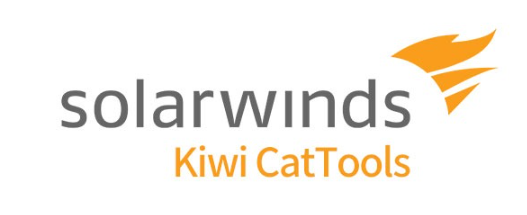
In comparing UVexplorer vs. SolarWinds Kiwi Cattools we found that both tools provide a lot of similar features for network device configuration backup, comparison, alerting and access. These features provide network engineers with an automated tool that can manage their configuration files. Here is a comparison of the two products:
Company Reputation and Support: SolarWinds had a strong reputation and is known for its suite of IT management tools. As a well-established company, SolarWinds offers comprehensive support options, including online resources, a robust user community, and dedicated support channels. SolarWinds was also the victim of a download vulnerability that has caused serious reputation issues in the industry.
UVexplorer, while not as well-known, has been in the industry for 7+ years, is US-based for Support, Development and Sales. They have over 25 years experience in the network management industry and UVexplorer offers support and resources for their users. It is a very fast growing network configuration management tool.
Features and Functionality: Both UVexplorer and SolarWinds Kiwi Cattools offer robust features for the management of network device configuration scripts. They provide compatibility to a wide range of switch, router and firewall manufacturers. In order to access the configuration files both products implement SSH, HTTP, SNMP V1, V2, V3, WMI, and VMware.
UVexplorer also provides troubleshooting tools like Traceroute, Enhanced Ping, Lookup IP Address, Lookup Hostname, CPU gauge, and SwitchPort Manager. In addition to these troubleshooting tools, UVexplorer also provides a SNMP MIB Walker, Jack Lookup, Putty, VLAN POE Management and Port Management. These features are not included with SolarWinds Kiwi Cattools
Both products will save your ‘Startup’ and ‘Running’ configurations from the router, switch and firewalls. They will display the differences between configuration files and alert an IT admin of any changes to the scripts.
SolarWinds Kiwi Cattools allows you to mass update the scripts across your network infrastructure. UVexplorer does not include this functionality. UVexplorer can capture asset details and Layer 2 maps that can be exported to Visio, PNG, PDF, Map – Image and Network Atlas. UVexplorer is not able to export to Network Atlas, like SolarWinds Kiwi Cattools but it will export to those formats and to LucidChart, SVG, Visio, HTML, MHT, DOCX, TXT, RTF, XLSX, CSV, Paessler PRTG, Hudu, IT Glue, AssetPanda and PatchManager

Ease of Use: Both tools prioritize user-friendly interfaces and intuitive controls. SolarWinds Kiwi Cattools may have a slight edge in this regard due to its modern user interface and well-documented features. UVexplorer has an edge on providing advanced asset details, network change notification, device grouping, assets report, stale port report, connectivity report, and full Windows inventory
Scalability: Both tools are capable of managing large and complex networks. UVexplorer is well-known for the speed of it’s backup and the additional features included.
Integration: SolarWinds Kiwi Cattools can integrate with other SolarWinds products to provide a comprehensive IT management solution. UVexplorer provides integration into PRTG, LucidChart, AssetPanda, HUDU and IT Glue.
Pricing: SolarWinds products are priced at a premium. UVexplorer, on the other hand, is a more cost-effective solution, and provides more results than SolarWinds Kiwi Cattools.

Conclusion
Every organization is different. For some organizations, a simple config backup program is efficient. For others they prefer a full-featured network management tool that can also replace other products in their tech stack, simplify and automate their network processes and delivery exceptional results. In comparing UVexplorer vs. SolarWinds Kiwi Cattools you will find they are capable tools, but the best choice for depends on your specific network size, budget, integration needs, and preference for the user experience and support.
All Rights Reserved. UVnetworks © 2015 – 2025